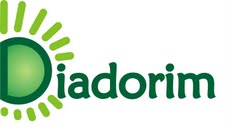GFEM NONLINEAR ANALYSIS USING AN ELASTOPLASTIC DAMAGE CONSTITUTIVE MODEL
DOI:
https://doi.org/10.26512/ripe.v2i14.21362Keywords:
Nonlinear Analysis. GFEM. Elastoplastic Damage Constitutive Model.Abstract
The Generalized Finite Element Method (GFEM) has been developed with the purpose of overcoming some limitations inherent to the Finite Element Method (FEM), related to problems that require remeshing. FEM solution space is enriched with a priori known information through the Partition of Unity (PU) at GFEM. Certain obstacles related to the nonlinear analysis can be mitigated with the use of GFEM and the damage and plasticity fronts can be represented. A FEM computational environment has been previously expanded with the enclosing of the GFEM formulation to linear analysis with minimum impact in the code structure and with requirements for extensibility and robustness. Such environment, so-called INSANE (INteractive Structural ANalysis Environment), is an object-oriented system that allows linear and nonlinear, static and dynamic structural analysis. Numerical simulations applying an elastoplastic damage constitutive model are carried out aiming to demonstrate the versatility of the code related to the application of such a constitutive model and GFEM.
Downloads
References
Alves, P. D., 2012. Estrat´egia global-local aplicada ao M´etodo dos Elementos Finitos Generalizados. MSc. thesis, Universidade Federal de Minas Gerais, Brazil.
Alves, P. D., Barros, F.B., Pitangueira, R. L. S., 2013. An object-oriented approach to the generalized finite element method. Advances in Engineering Software, vol. 59, pp. 1-18.
Babuˇska I. and Caloz, G. O. J. E., 1994. Special finite element method for a class of second order elliptic problems with rough coefficients. SIAM Journal on Numerical Analysis, vol. 36, pp. 3553-3576.
Barros, F.B., 2002. M´etodos sem malha e m´etodo dos elementos finitos generalizados em an´alise n˜ao linear de estruturas. Ph.D. thesis, Universidade de S˜ao Paulo, S˜ao Carlos, SP, Brazil.
Benallal, A., Billardon, R., Doghri, I. and Moret-Bailly, L., 1987. Crack initiation and propagation analyses taking into account initial strain hardening and damage fields. Fourth Int. Conf. of Numerical Methods in Fracture Mechanics, Texas, EUA.
Carol, I., Rizzi, E., Willam, K. 1994. A unified theory of elastic degradation and damage based on a loading surface. International Journal of Solids Structures, vol. 31, pp. 2835- 2865.
Coleman, B. D. and Gurtin, M. E., 1967. Thermodynamics with internal state variables. Journal of Chemistry and Physics, vol. 47, pp. 597-613.
Duarte, C. A. M. and Oden, J. T., 1995. Hp-clouds - a meshless method to solve boundary value problem. Technical Report, TICAM, The University of Texas at Austin.
Duarte, C. A. M. and Oden, J. T., 1996a. An hp-adaptive method using clouds. Computer Methods in Applied Mechanics and Engineering, vol. 139, pp. 237-262.
Duarte, C. A. M. and Oden, J. T., 1996b. Hp-clouds and hp-meshless method. Numerical Methods for Partial Differential Equations, vol. 12, pp. 673-705.
Duarte, C. A., Babuˇska, I., Oden, J. T., 2000. Generalized finite element methods for threedimensional structural mechanics problems. Computers and Structures, vol. 77, pp. 215-232.
Lemaitre, J., 1985a. A continuous damage mechanics model for ductile fracture. Journal of Engineering Materials Technology, vol. 107, pp. 83-89.
Lemaitre, J., 1985b. Coupled elasto-plasticity and damage constitutive equations. Comp. Meth. Appl. Mech. Engng, vol. 51, pp. 31-49.
Lemaitre, J. and Chaboche, J. L., 1990. Mechanics of solid materials. Cambridge University Press.
Lemaitre, J., Sermage, J. P. and Desmorat, R., 1999. A two scale damage concept applied to fatigue. Tech Science Press, vol. 97, pp. 67-81.
Mashayekhi, M., Ziaei-Rad, S., Parvizian, J., Nikbin, K. and Hadavinia, H., 2005. Numerical analysis of damage evolution in ductile solids. Tech Science Press, vol. 1, pp. 65-82.
Melenk, J. M. and Babuˇska, I., 1996. The partition of unity finite element method: basic theory and applications. Computer Methods in Applied Mechanics and Engineering, vol. 139, pp. 289-314.
Monteiro, A. B., 2013. Ambiente Te´orico-Computacional Unificado para Modelos Constitutivos: Inclus˜ao de Modelo Elastopl´astico com Dano. Master’s thesis, Universidade Federal de Minas Gerais, Brazil.
Murakami, S., 2012. Continuum Damage Mechanics. Springer, Nagoya, Jap˜ao.
Penna, S. S., 2011. Formulac¸ ˜ao multipotencial para modelos de degradac¸ ˜ao el´astica: Unificac¸ ˜ao te´orica, proposta de novo modelo, implementac¸ ˜ao computacional e modelagem de estruturas de concreto. Ph.D. thesis, Universidade Federal de Minas Gerais, Brazil.
Downloads
Published
How to Cite
Issue
Section
License
Given the public access policy of the journal, the use of the published texts is free, with the obligation of recognizing the original authorship and the first publication in this journal. The authors of the published contributions are entirely and exclusively responsible for their contents.
1. The authors authorize the publication of the article in this journal.
2. The authors guarantee that the contribution is original, and take full responsibility for its content in case of impugnation by third parties.
3. The authors guarantee that the contribution is not under evaluation in another journal.
4. The authors keep the copyright and convey to the journal the right of first publication, the work being licensed under a Creative Commons Attribution License-BY.
5. The authors are allowed and stimulated to publicize and distribute their work on-line after the publication in the journal.
6. The authors of the approved works authorize the journal to distribute their content, after publication, for reproduction in content indexes, virtual libraries and similars.
7. The editors reserve the right to make adjustments to the text and to adequate the article to the editorial rules of the journal.









